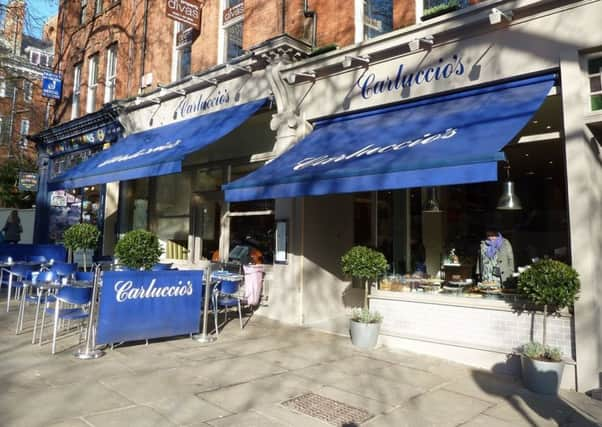Hundreds of jobs at risk from Carluccio's restructuring plans


The Italian food business, which was founded by the late Antonio Carluccio in 1999, is embarking on a Company Voluntary Agreement (CVA), which will allow it to reduce rents while it enters negotiations with landlords.
However, it is thought that about 30 stores could eventually close as part of the process.
Advertisement
Hide AdAdvertisement
Hide AdCarluccio’s said it was relocating staff to remaining outlets where possible and would try to keep job losses at a minimum.
A majority of 91% of creditors, including landlords, approved the CVA in a vote on Thursday.
Carluccio’s required the support of 75% of creditors to proceed.
Carluccio’s CEO Mark Jones said: “I would like to thank our landlords for their support. We now look forward to a positive future and the on-going development of the Carluccio’s business and of course our passionate people.”
Advertisement
Hide AdAdvertisement
Hide AdCarluccio’s is owned by Dubai-based Landmark Group, which bought the business for £90 million in 2010.
To help in the months ahead, Landmark will invest a further £10m in the business.
Will Wright, restructuring partner at KPMG and joint supervisor of the CVA, said: “This is an important step forward for the business, allowing Carluccio’s to complete its financial restructuring plan and embark on a comprehensive operational transformation programme.”
Other restaurants that have undertaken CVAs so far this year include Byron, Prezzo and Jamie’s Italian.
Advertisement
Hide AdAdvertisement
Hide AdA number of retailers, including New Look and House of Fraser, have also prepared CVAs in a bid to stay afloat.
The high street has come under strain from a combination of rising rents, business rates and labour costs, at a time when discretionary incomes have come under pressure.